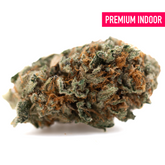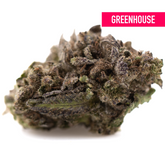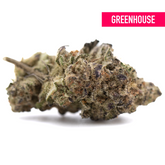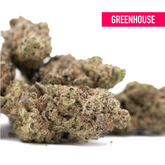Indoor vs Outdoor THCA Flower: Quality, Potency and Price Comparison

The cultivation method behind your THCA flower significantly impacts everything from potency and quality to price and overall experience. Whether you're seeking the controlled precision of indoor THCA flower or the natural complexity of outdoor cultivation, understanding these differences is crucial for making informed purchasing decisions.
This comprehensive comparison examines how outdoor vs indoor cannabis cultivation affects THCA quality, potency, and pricing, helping you choose the perfect flower for your needs and budget.
Understanding THCA Flower Cultivation Methods
THCA (tetrahydrocannabinolic acid) is the non-psychoactive precursor to THC found in raw cannabis. The cultivation environment profoundly influences how this compound develops, alongside the full spectrum of cannabinoids and terpenes that define quality THCA flower.
Cannabis cultivation methods fall into three primary categories: indoor, outdoor, and greenhouse (hybrid). Each approach offers distinct advantages and challenges that directly impact the final product's characteristics.
Indoor cultivation provides complete environmental control, allowing growers to optimize every aspect of plant development. Outdoor cultivation harnesses natural elements while accepting seasonal limitations and environmental variables. Greenhouse cultivation attempts to balance both approaches, offering some environmental control while utilizing natural sunlight.
Section 1: Indoor Cultivation Advantages
Controlled Environment Benefits
Indoor grown THCA flower benefits from precise environmental control that outdoor cultivation cannot match. Temperature, humidity, lighting, and air circulation remain consistent throughout the growing cycle, creating optimal conditions for THCA development.
Indoor facilities maintain temperatures between 65-80°F during vegetative growth and 65-75°F during flowering. Humidity levels are precisely controlled, typically ranging from 40-60% during flowering to prevent mold and optimize resin production. This controlled environment eliminates the stress factors that can reduce THCA potency and overall quality.
Advanced indoor facilities utilize sophisticated climate control systems, including HVAC units, dehumidifiers, and CO2 supplementation. These systems create an environment where plants can focus energy on producing high-quality THCA rather than adapting to environmental stresses.
Consistent Quality Factors
The controlled nature of indoor cultivation results in remarkably consistent quality across harvests. THCA quality remains stable because environmental variables are eliminated, allowing for predictable cannabinoid and terpene development.
Indoor growers can replicate successful growing conditions exactly, ensuring that each harvest meets the same quality standards. This consistency is particularly valuable for medical users who require predictable effects and potency levels.
Quality control measures in indoor facilities include regular monitoring of pH levels, nutrient concentrations, and environmental conditions. These precise controls result in uniform bud structure, consistent trichome development, and reliable potency levels that outdoor cultivation struggles to match.
Pest and Contamination Control
Indoor cultivation provides superior protection against pests, diseases, and contaminants that can compromise THCA flower quality. Sealed growing environments prevent insects, mold, and other pathogens from accessing plants, reducing the need for pesticides and fungicides.
Advanced filtration systems remove airborne contaminants, including dust, pollen, and harmful microorganisms. This clean environment ensures that premium THCA flower maintains its purity and potency without chemical treatments that might affect quality.
Indoor facilities often implement integrated pest management (IPM) systems that use beneficial insects and organic treatments to maintain plant health. These natural approaches preserve the integrity of THCA flower while ensuring it remains free from harmful chemicals.
Year-Round Production
Indoor cultivation enables consistent, year-round production of high-quality THCA flower. Unlike outdoor cultivation, which is limited to specific growing seasons, indoor facilities can produce multiple harvests annually.
This continuous production capability ensures steady availability of fresh THCA flower, preventing the quality degradation that occurs when products sit in storage for extended periods. Fresh flower maintains higher terpene levels and better overall quality compared to aged products.
Year-round production also allows growers to respond quickly to market demands and maintain consistent inventory levels. Consumers benefit from access to fresh, high-quality THCA flower regardless of season or weather conditions.
Potency Optimization
Indoor cultivation allows for precise optimization of growing conditions to maximize THCA potency. Growers can adjust lighting spectrums, nutrient formulations, and environmental conditions to enhance cannabinoid production.
Advanced LED lighting systems provide optimal light spectrums for different growth phases, promoting maximum THCA development. These systems can be programmed to mimic natural sun cycles while providing consistent light intensity throughout the growing space.
Nutrient management in indoor facilities ensures plants receive optimal nutrition for THCA production. Precise nutrient solutions, tailored to specific growth phases, maximize cannabinoid synthesis and overall plant health.
Section 2: Outdoor Cultivation Benefits
Natural Growing Conditions
Outdoor THCA cultivation harnesses the full spectrum of natural sunlight, which many growers believe produces superior terpene profiles and overall plant health. The sun's complete light spectrum, including UV rays, stimulates natural plant defense mechanisms that can enhance THCA and terpene production.
Natural growing conditions create stress responses in plants that often result in higher resin production as a protective mechanism. These stress factors, while potentially reducing yield, can contribute to more complex cannabinoid and terpene profiles in the final product.
Outdoor plants typically develop more robust root systems due to unlimited soil space, potentially leading to improved nutrient uptake and overall plant health. This natural development can contribute to unique characteristics that indoor cultivation struggles to replicate.
Sustainability Factors
Outdoor cultivation represents the most environmentally sustainable approach to THCA flower production. Natural sunlight eliminates the massive energy consumption associated with indoor lighting systems, significantly reducing the carbon footprint of cultivation.
Water usage in outdoor cultivation often relies on natural precipitation and efficient irrigation systems that use significantly less water than indoor hydroponic systems. This reduced resource consumption makes outdoor cultivation more environmentally responsible.
Organic outdoor cultivation practices, including composting and natural pest management, create sustainable growing ecosystems that benefit both the environment and product quality. These practices align with consumer preferences for environmentally conscious products.
Cost-effectiveness
Outdoor cultivation offers significant cost advantages over indoor methods, primarily due to eliminated electricity costs for lighting and climate control. These savings can be passed on to consumers, making outdoor THCA flower more accessible to budget-conscious buyers.
Lower production costs don't necessarily indicate lower quality, as outdoor cultivation can produce exceptional THCA flower when conditions are optimal. The cost savings primarily result from reduced overhead expenses rather than compromised quality.
Outdoor operations also require less initial investment in infrastructure compared to indoor facilities. This lower barrier to entry allows more small-scale growers to participate in the market, increasing competition and potentially improving prices for consumers.
Unique Terpene Development
Outdoor cultivation often produces unique terpene profiles that reflect the specific terroir of the growing region. Environmental factors including soil composition, climate, and altitude contribute to distinctive aromatic and flavor characteristics.
Natural temperature fluctuations between day and night, which outdoor plants experience, can stimulate terpene production and create complex flavor profiles. These temperature variations are difficult to replicate indoors but contribute significantly to product uniqueness.
The interaction between plants and their natural environment, including beneficial soil microorganisms and natural air circulation, can enhance terpene development and create products with distinctive characteristics that indoor cultivation cannot duplicate.
Seasonal Variations
Outdoor cultivation produces seasonal variations that many consumers appreciate for their uniqueness and limited availability. Each harvest reflects the specific growing conditions of that season, creating products with distinct characteristics.
These seasonal variations can result in different potency levels and terpene profiles throughout the year, offering consumers variety and unique experiences. Some consumers prefer the complexity and uniqueness of seasonal outdoor harvests.
Limited harvest windows create scarcity that some consumers value, particularly those seeking unique or special products. This scarcity can add perceived value to outdoor THCA flower and justify premium pricing for exceptional batches.
Section 3: Quality Comparison
Appearance and Aesthetics
Indoor THCA flower typically exhibits superior visual appeal due to controlled growing conditions that optimize bud structure and coloration. Indoor buds often display more consistent shapes, sizes, and colors compared to outdoor varieties.
The controlled environment of indoor cultivation prevents weather damage, insect damage, and other factors that can affect the visual appearance of outdoor buds. This results in more photogenic products that often command premium prices in the market.
However, outdoor THCA flower can develop unique colorations and characteristics that reflect natural growing conditions. Some consumers prefer the natural appearance of outdoor flower, viewing it as more authentic and less artificial than indoor alternatives.
Trichome Development
Trichome development varies significantly between indoor and outdoor cultivation methods. Indoor cultivation with optimal lighting and environmental conditions often produces dense trichome coverage with consistent development across all bud surfaces.
THCA potency comparison studies often show that indoor flower has more consistent trichome development, resulting in more predictable potency levels. The controlled environment allows for optimal trichome production throughout the flowering cycle.
Outdoor cultivation can produce exceptional trichome development when conditions are optimal, but consistency varies based on weather conditions and environmental factors. Natural stress factors can sometimes stimulate increased resin production, resulting in high-quality outdoor flower.
Terpene Preservation
Terpene preservation differs significantly between cultivation methods. Indoor cultivation allows for precise control of drying and curing conditions, which are crucial for preserving volatile terpenes that contribute to aroma and flavor.
Outdoor flower may experience terpene degradation due to exposure to wind, rain, and temperature fluctuations during the growing cycle. However, outdoor cultivation can also produce unique terpene profiles that indoor cultivation cannot replicate.
Proper post-harvest handling is crucial for both cultivation methods. Indoor facilities often have better control over drying and curing conditions, which can result in superior terpene preservation and overall quality maintenance.
Moisture Content
Moisture content control is generally superior in indoor cultivation due to controlled environmental conditions during both growing and post-harvest processing. Consistent humidity levels throughout the process result in optimal final moisture content.
Outdoor cultivation faces challenges with moisture content due to weather variations and less controlled drying conditions. However, experienced outdoor growers can achieve excellent moisture content through proper timing and post-harvest techniques.
Proper moisture content is crucial for THCA flower quality, affecting both potency and shelf life. Indoor cultivation's controlled environment provides advantages in achieving and maintaining optimal moisture levels.
Shelf Life Differences
Indoor THCA flower typically enjoys longer shelf life due to controlled growing conditions that minimize contamination and optimal post-harvest processing. The clean environment reduces the risk of mold and other contaminants that can shorten shelf life.
Outdoor flower may have shorter shelf life due to potential exposure to environmental contaminants and less controlled post-harvest processing. However, properly grown and processed outdoor flower can achieve excellent shelf life comparable to indoor products.
Storage conditions after harvest significantly impact shelf life for both cultivation methods. Proper storage in controlled environments can extend the shelf life of both indoor and outdoor THCA flower significantly.
Section 4: Potency Analysis
THCA Percentage Comparisons
THCA percentage analysis reveals interesting differences between indoor and outdoor cultivation methods. Indoor cultivation typically produces more consistent THCA percentages across harvests due to controlled growing conditions that optimize cannabinoid production.
Laboratory testing of indoor THCA flower often shows higher average potency levels, with some premium indoor varieties reaching 25-30% THCA content. The controlled environment allows growers to fine-tune conditions specifically for maximizing THCA production.
Outdoor cultivation can produce exceptional THCA percentages when conditions are optimal, sometimes matching or exceeding indoor levels. However, outdoor potency tends to be more variable depending on weather conditions and growing season characteristics.
Cannabinoid Profile Differences
The cannabinoid profile extends beyond THCA to include other beneficial compounds like CBD, CBG, and CBC. Indoor cultivation allows for precise control over these profiles through environmental manipulation and selective breeding.
Cultivation impact on cannabinoid profiles is significant, with indoor cultivation typically producing more consistent ratios of various cannabinoids. This consistency is valuable for consumers seeking predictable effects.
Outdoor cultivation can produce unique cannabinoid profiles that reflect natural growing conditions and stress responses. These profiles may offer different therapeutic benefits and effects compared to indoor alternatives.
Testing Consistency
Laboratory testing reveals that indoor THCA flower typically shows greater consistency in potency and cannabinoid profiles across different batches. This consistency results from controlled growing conditions that minimize variables affecting cannabinoid production.
Testing variability in outdoor flower reflects natural variations in growing conditions, including weather patterns, soil conditions, and seasonal factors. While this creates less predictable results, it can also produce unique products with distinctive characteristics.
Quality assurance testing is crucial for both cultivation methods. Reputable producers of both indoor and outdoor THCA flower conduct comprehensive testing to ensure product safety and accurately represent potency levels.
Batch-to-Batch Variation
Batch-to-batch variation is typically lower in indoor cultivation due to controlled environmental conditions that can be replicated exactly for each harvest. This consistency is valuable for medical users who require predictable effects.
Outdoor cultivation exhibits greater batch-to-batch variation due to seasonal changes and weather variations. However, this variation can create unique products that some consumers prefer for their distinctiveness.
Understanding batch variation helps consumers make informed decisions about their THCA flower purchases. Some prefer the consistency of indoor cultivation, while others appreciate the uniqueness of outdoor variation.
Section 5: Price Point Analysis
Cost Factors for Each Method
The economics of THCA flower production vary significantly between indoor and outdoor methods. Indoor cultivation requires substantial initial investment in facilities, lighting systems, climate control, and ongoing electricity costs that directly impact final product pricing.
Indoor operations typically spend 40-60% of their operational budget on electricity alone, primarily for lighting and climate control systems. These costs are directly reflected in the final product price, making indoor THCA flower generally more expensive than outdoor alternatives.
Outdoor cultivation eliminates most electricity costs but may require larger land areas and face seasonal limitations that affect production efficiency. Weather-related crop losses can also impact pricing by reducing available supply.
Value Proposition
The value proposition for indoor THCA flower centers on consistency, quality control, and year-round availability. Consumers paying premium prices for indoor flower receive predictable potency, clean products, and consistent quality across purchases.
Outdoor THCA flower offers value through lower prices and unique characteristics that reflect natural growing conditions. The cost savings can be substantial, making high-quality THCA flower accessible to more consumers.
Premium THCA flower from both cultivation methods can justify their pricing through superior quality, rigorous testing, and optimal growing practices. The value proposition depends on consumer priorities and preferences.
Premium Pricing Justification
Premium pricing for indoor THCA flower is justified by controlled growing conditions, consistent quality, and comprehensive testing protocols. The investment in facilities and technology creates products that command higher prices in the market.
Indoor cultivation's ability to produce multiple harvests annually provides economic advantages that can justify premium pricing. The consistent availability and quality reliability create value for consumers willing to pay higher prices.
Outdoor cultivation can also command premium prices when exceptional quality is achieved. Unique terpene profiles, organic growing practices, and limited availability can justify higher prices for exceptional outdoor flower.
Budget-Friendly Options
Budget-conscious consumers can find excellent value in outdoor THCA flower that offers good quality at lower prices. The reduced production costs of outdoor cultivation make high-quality THCA flower accessible to more consumers.
Indoor cultivation also offers budget-friendly options, particularly from smaller buds or trim products that maintain quality while reducing costs. These options provide access to indoor-quality THCA flower at more affordable prices.
Greenhouse vs indoor cultivation offers a middle ground, providing some environmental control while utilizing natural sunlight to reduce costs. This hybrid approach can offer excellent value for budget-conscious consumers.
Factors to Consider When Choosing
Personal Priorities
Your choice between indoor and outdoor THCA flower should align with your personal priorities and preferences. Consider whether you value consistency, uniqueness, sustainability, or cost-effectiveness most highly in your purchasing decisions.
Medical users who require predictable effects and consistent potency may prefer indoor cultivation's reliability. Recreational users who enjoy variety and unique experiences might prefer outdoor cultivation's seasonal variations.
Environmental consciousness may influence your choice, as outdoor cultivation typically has a smaller environmental footprint. Consider the sustainability aspects of your purchasing decisions and their alignment with your values.
Budget Considerations
Budget constraints significantly impact cultivation method choice. Indoor THCA flower typically costs 20-40% more than comparable outdoor alternatives due to higher production costs and controlled growing conditions.
Consider the total value proposition rather than just initial price. Higher-priced indoor flower may offer better value if it provides consistent quality and effects that meet your needs reliably.
Budget-friendly options exist in both cultivation methods. Research different products and producers to find the best value for your specific needs and budget constraints.
Quality Requirements
Assess your quality requirements carefully when choosing between cultivation methods. If you require consistent potency and effects, indoor cultivation may better meet your needs despite higher costs.
Visual appearance preferences may influence your choice, as indoor cultivation typically produces more aesthetically pleasing products. However, outdoor cultivation can produce exceptional quality when conditions are optimal.
Consider your tolerance for variation in quality and effects. Some consumers prefer the predictability of indoor cultivation, while others enjoy the uniqueness of outdoor products.
Frequently Asked Questions
Q: Is indoor THCA flower always more potent than outdoor? A: Not necessarily. While indoor cultivation provides better control over conditions that affect potency, outdoor cultivation can produce exceptionally potent THCA flower when conditions are optimal. The key difference is consistency rather than maximum potency potential.
Q: Why is indoor THCA flower more expensive than outdoor? A: Indoor cultivation requires significant investments in facilities, lighting, climate control, and ongoing electricity costs. These production expenses are reflected in the final product price, typically making indoor flower 20-40% more expensive than outdoor alternatives.
Q: Does outdoor THCA flower have more pesticides? A: Outdoor cultivation faces more pest pressure and may require more pest management interventions. However, many outdoor growers use organic methods and integrated pest management. Always check lab testing results for pesticide residues regardless of cultivation method.
Q: Which cultivation method is more environmentally friendly? A: Outdoor cultivation is generally more environmentally sustainable due to natural sunlight usage and lower energy consumption. Indoor cultivation requires significant electricity for lighting and climate control, creating a larger carbon footprint.
Q: Can you tell the difference between indoor and outdoor THCA flower? A: Experienced consumers can often identify differences in appearance, aroma, and effects. Indoor flower typically has more consistent appearance and dense trichome coverage, while outdoor flower may have unique terpene profiles and seasonal characteristics.
Q: Which method produces better terpene profiles? A: Both methods can produce excellent terpene profiles. Indoor cultivation allows for precise control over conditions that preserve terpenes, while outdoor cultivation can produce unique profiles that reflect natural growing conditions and terroir.
Q: Is greenhouse cultivation better than indoor or outdoor? A: Greenhouse cultivation offers a compromise between methods, providing some environmental control while utilizing natural sunlight. It can produce high-quality THCA flower at moderate costs, making it an attractive middle-ground option.
Q: How long does THCA flower from each method stay fresh? A: Both cultivation methods can produce flower with excellent shelf life when properly grown, harvested, and stored. Indoor flower may have slight advantages due to controlled growing conditions, but proper storage is more important than cultivation method for maintaining freshness.
Conclusion
The choice between indoor and outdoor THCA flower ultimately depends on your individual priorities, budget, and quality requirements. Indoor THCA flower offers consistency, controlled quality, and year-round availability at premium prices. Outdoor cultivation provides unique characteristics, environmental sustainability, and cost-effectiveness with seasonal variations.
Both cultivation methods can produce exceptional THCA flower when proper growing practices are employed. The key is understanding what characteristics matter most to you and finding reputable producers who excel in their chosen cultivation method.
Consider your budget, quality requirements, environmental concerns, and personal preferences when making your decision. Whether you choose the controlled precision of indoor cultivation or the natural complexity of outdoor growing, quality THCA flower is available through both methods.
For the best selection of premium THCA flower from both indoor and outdoor cultivation methods, explore the diverse options available at Hemp Flower's new releases. Their curated selection ensures you'll find high-quality products that meet your specific needs and preferences, regardless of your preferred cultivation method.











